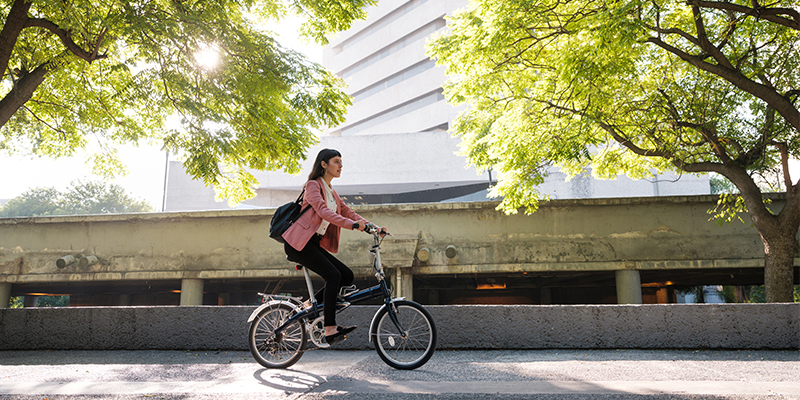Dusty parking codes and parking minimums have contributed to the creation of between three and eight parking spaces per car in the U.S., cost real estate developers untold billions of dollars, and caused gridlock in urban centers. But now, these decades-old rules may be in for a dramatic overhaul as parking demand drops as much as 90% in many areas of the country, and municipalities and businesses consider these empty spaces for other uses.
Traditionally, municipalities have not allowed the cost burdens of “free parking” placed on developers to sway parking policy, according to Christine Banning, IOM, CAE, president of the National Parking Association, writing in the Spring 2019 issue of Development magazine. What could now change these parking minimums is the need for cities and towns to convert parking spaces into other uses, such as outdoor dining spaces, in an effort to save these small businesses. Residents, eager for lunch or dinner out with family and friends, are backing these changes.
Examples of these changes are apparent across the country: In Philadelphia, in the summer of 2020, the city government converted coveted parking spaces into uses for restaurants. In New York City there is a similar trend to push restaurant dining to the sidewalk and on out into the street. Connecticut Governor Ned Lamont as well took steps to suspend parking minimums in his state to facilitate outdoor dining. In Indianapolis, portions of several downtown streets have been completely closed to allow additional outside space for restaurants and bars. There are numerous other examples as well, including in Pittsburgh and Raleigh, North Carolina.
Entire parking lots, not just individual parking spaces, are being converted to other uses as well. Empty parking lots are finding new life as drive-in movie theaters, drive-in funeral venues, where mourners can watch the proceedings on big screens from their cars, and even auxiliary doctors’ offices.
While restaurants and movie theaters may return to the interiors of buildings after the pandemic, one trend that will not go away is the increase in online shopping. It was estimated that three billion packages were delivered during the recent holiday season, 800 million more than the 2019 holiday season. Commercial real estate developers, planners and city officials are now looking at the needs of future buildings and the potential delivery space around them. By one estimate, a large multi-tower multifamily project with 2,000 apartments may require accommodating the delivery of one package per apartment per day. In addition, 30% of those goods purchased will be returned. This new reality may require more than mere changes in parking minimums. It may require that current parking minimums need to be rethought to accommodate truck parking and a staffed post office within the parking garage to handle all of the packages.














